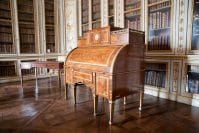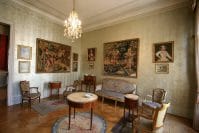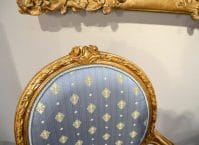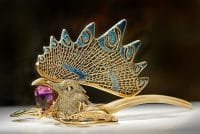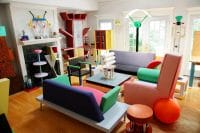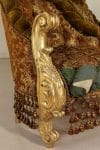Louis Philippe Style: History and Characteristics
As with the previous rulers of France, the name of Louis Philippe of Orleans also gives its name not only to the period in which he was sovereign, but also to the era and artistic style that developed in those years (1830 - 1848).
With Louis Philippe style the “Neoclassical” cycle effectively ends, which began in Louis XVI and manifested itself at its peak in the Empire: the characteristics of magnificence typical of the Napoleonic period were abandoned and interests began to be shown aimed at the needs and tastes of a bourgeoisie that was slowly expanding and could be defined as almost the new style of bourgeois industrialists.
The characteristics of the Louis Philippe style
Consequently, furnishings no longer have to perform a representative function in large buildings, but they must have practical functions, convenience and practical taste. An attempt is also made to disguise newly produced furniture with decorations inspired by past styles, but replacing the rich gilded bronze decorations previously made by artisans with mass-produced replicas of the first industrial productions. General conditions that led to a lowering of furniture costs increasingly to the detriment of quality.
The great interpreters of this style, those who often worked for this same French royal house and for the most important European clients, fall outside of this trend.
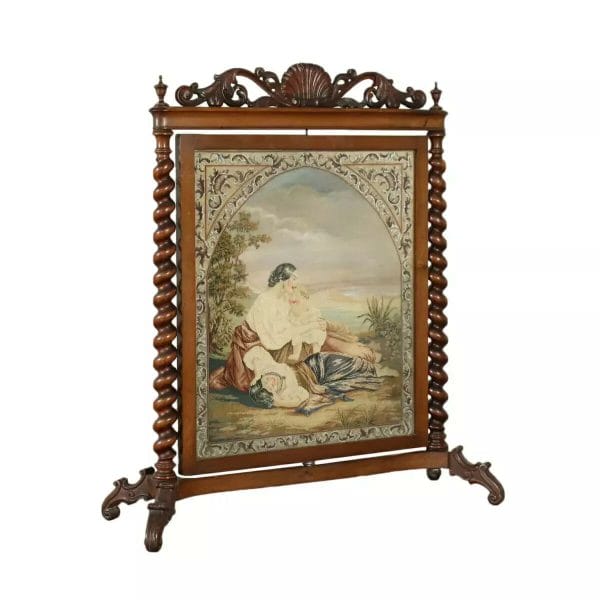
Alphonse Jacob Desmalter
Although his work is more attributable to earlier styles, Desmalter's workshop continued, thanks to his son, to produce some of the most valuable pieces of the first half of the 19th century.
François-Honoré-Georges Jacob-Desmalter conducted one of the most important and prosperous furniture workshops in Paris in the early 1800s. The son of a well-known chair maker, Georges Jacob, Jacob-Desmalter took over his father's business with his older brother in 1796. When his brother died six years later, Jacob-Desmalter rehired his father as his partner and began to develop one of the largest furniture workshops in Paris. In 1808 he employed 332 workers to produce pieces worth over 700.000 francs a year. A third of this stock was intended for export; his warehouse alone contained furniture worth over 500.000 francs.
The furniture produced by the Jacob-Desmalter et Cie company was Made primarily from Empire style mahogany, where geometric shapes and straight lines prevailed. Among the clients Paolina Borghese, sister of Napoleon I, and the Empress Josephine, he supplied numerous pieces for the imperial residences. One particularly important commission was a magnificent cradle built for the newborn Napoleon II, King of Rome.
Heavily dependent on orders from the house of Napoleon, the business failed in 1813, when the emperor fell from power. Jacob-Desmalter, however, managed to resurrect the company and continued to run it until his son, Alphonse-George, succeeded him in 1825.
Alexandre Bellange
He had received his education from his father. When he takes over the family business, he inaugurates a production in line with that of his father, in particular for the production of "curiosity" furniture, but characterized by its own style.
“Curiosities” furniture was appreciated less for its usefulness, its mere beauty or coherence with the taste of the environment than for being the support of rare decorative elements, for its historical character or for its nature. The same models, declined according to the same shapes and structures, for the father and for the son, reveal the collectors' desire to own an object that integrates these rare elements, like porcelain, lacquer, while evoking references to the luxury cabinet-making of the 17th and 18th centuries.
Alexandre Bellangé knew how to renew the materials used in veneer or mother-of-pearl, and borrows most of their decorations, its bronze ornaments and some of its forms from the 17th and 18th centuries.

However, cabinet makers "out of curiosity" are not satisfied with remaking furniture in the manner of Boulle, Riesener or Carlin. On the contrary, they produce furniture cases, supports for decorative elements with a clear historical tone that gives them a status of precious curiosity, accompanying, with their chronological exoticism, authentic furniture of past centuries in luxurious interiors, in France, among collectors and passionate.
Guillaume Grohé
Renowned Parisian cabinetmaker, who flourished in the 19th century.
In 1827, Guillaume and his brother Jean-Michel founded the Grohé Frères company, for which they worked from 1829 to 1881. After Jean-Michel's retirement in 1881, Guillaume continued to run the business alone until his death. Thanks to the exceptional quality of the fine furniture produced by the company, Grohé Frères became the official supplier to members of the European aristocracy and royalty, including Emperor Napoleon III and Empress Eugenie. Likewise, the French Duke of Aumale commissioned the brothers to produce most of the furniture for the Château de Chantilly.
After Jean-Michel's retirement, Guillaume became a member of the jury of the Parisian Universal Expositions, which led him to become vice-president of the 1878 Exposition.
And mobili
The Louis Philippe style does not present particularly original characteristics, but brings with it instances specific to the Restoration, enriching its decorations. The refined elegance of the previous period is lost in the furnishings and decorative elements inspired by the most various eras and adapted to the taste of the time are introduced, from the Middle Ages to the Renaissance.

How to recognize a Louis Philippe style piece of furniture
The antiques belonging to the Louis Philippe style have solid shapes and refined decorations, they are functional and practical furniture with straight and sober lines softened by rounded elements. The most used woods are walnut, modano and rosewood, dark woods that contrast with light intents.
The decorative style takes up the naturalistic and animalistic motifs characterized by shells, vegetal spirals and leaves, dolphins and swans stylized in unrefined and industrial nature.
Among the types of furniture, the most popular table is the one with a round or oval top, supported by a central leg with three feet, often accompanied by marble tops together with the consoles.
The chairs have concave and curved backs, the so-called "gondolines" with carved front legs and saber-shaped rear legs. The seat is padded, rectangular or semicircular in shape.
What are they worth
As regards value, Louis Philippe furniture has suffered more than other eras from the partial devaluation that affected the world of antiques, due to the characteristics exposed in this short article.
Nonetheless, these are characteristic pieces, made with materials and with a skill that can rarely be found nowadays and therefore represent an opportunity, at this moment in the market, for enthusiasts and collectors.
Images
https://commons.wikimedia.org/wiki/File:Commode_droite_style_Louis-Philippe,_%C3%A9cusson_2.JPG
Benoît Prieur, via Wikimedia Commons
https://commons.wikimedia.org/wiki/File:Chambre_Hope_(1838).jpg
Jospe, CC BY-SA 4.0 https://creativecommons.org/licenses/by-sa/4.0, via Wikimedia Commons




